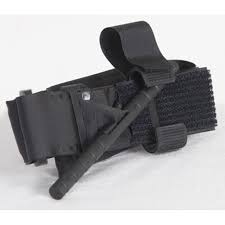Proper Use of Tourniquets – 2018

ISSN-1059-6518
Proper Use of Tourniquets – 2018
By Jeff DeBellis
Illustrations by T.B.R. Walsh
SOLO recently updated its tourniquet curriculum to incorporate the latest evidence. A growing trove of research in recent decades has confirmed that tourniquets are extremely effective at stopping massive bleeds. When used appropriately, they have minimal complications. Tourniquets have been a contentious piece of the pre-hospital medical kit for thousands of years. The emergency medical community has swung back and forth on their merits and drawbacks during that time. The era of evidence-based medicine itself is relatively new. It’s only since the war in Vietnam that researchers have begun to study tourniquets systematically. This research has led to improved education and much greater success.
A tourniquet is still a last resort to stop severe extremity bleeding in the wilderness setting. Only use one if there is a traumatic amputation, obvious arterial bleeding, or if direct pressure will not stop the bleeding. They should never be used on minor bleeds. Using a tourniquet on minor bleeds or shoddy improvisation by inadequately trained caregivers are some of the reasons that many surgeons vilified tourniquets for so long.
The major change in the curriculum is that tourniquets are no longer just for life-over-limb situations. They are a life-saving technique that should be used without hesitation. So long as the tourniquet can be removed within a couple of hours, patients are unlikely to lose the limb. One recent study looked at 232 patients who had tourniquets applied to 309 limbs. Not a single limb was lost to amputation because of the use of tourniquets.
How to Apply a Tourniquet:
There are a number of commercial tourniquet models available. The two that the US Army Institute of Surgical Research identifies as being 100% effective are the Combat Application Tourniquet (CAT) and the SOF Tactical Tourniquet (SOFTT). A properly improvised and placed tourniquet can work just as well as a commercial model.
Evidenced-based medical research has shown that the proper position for the tourniquet is two to three inches above the site of bleeding. It is important to take a few seconds and locate the site of bleeding and then place the tourniquet. You cannot place a tourniquet over a joint, the knee or the elbow. If necessary, move just proximal to the joint and place the tourniquet.





